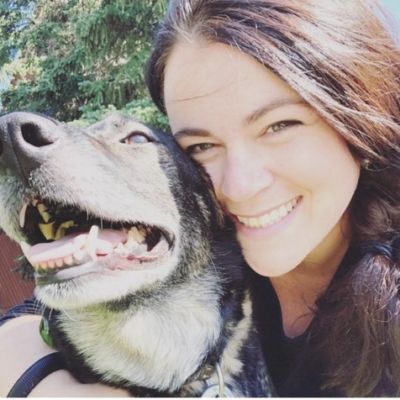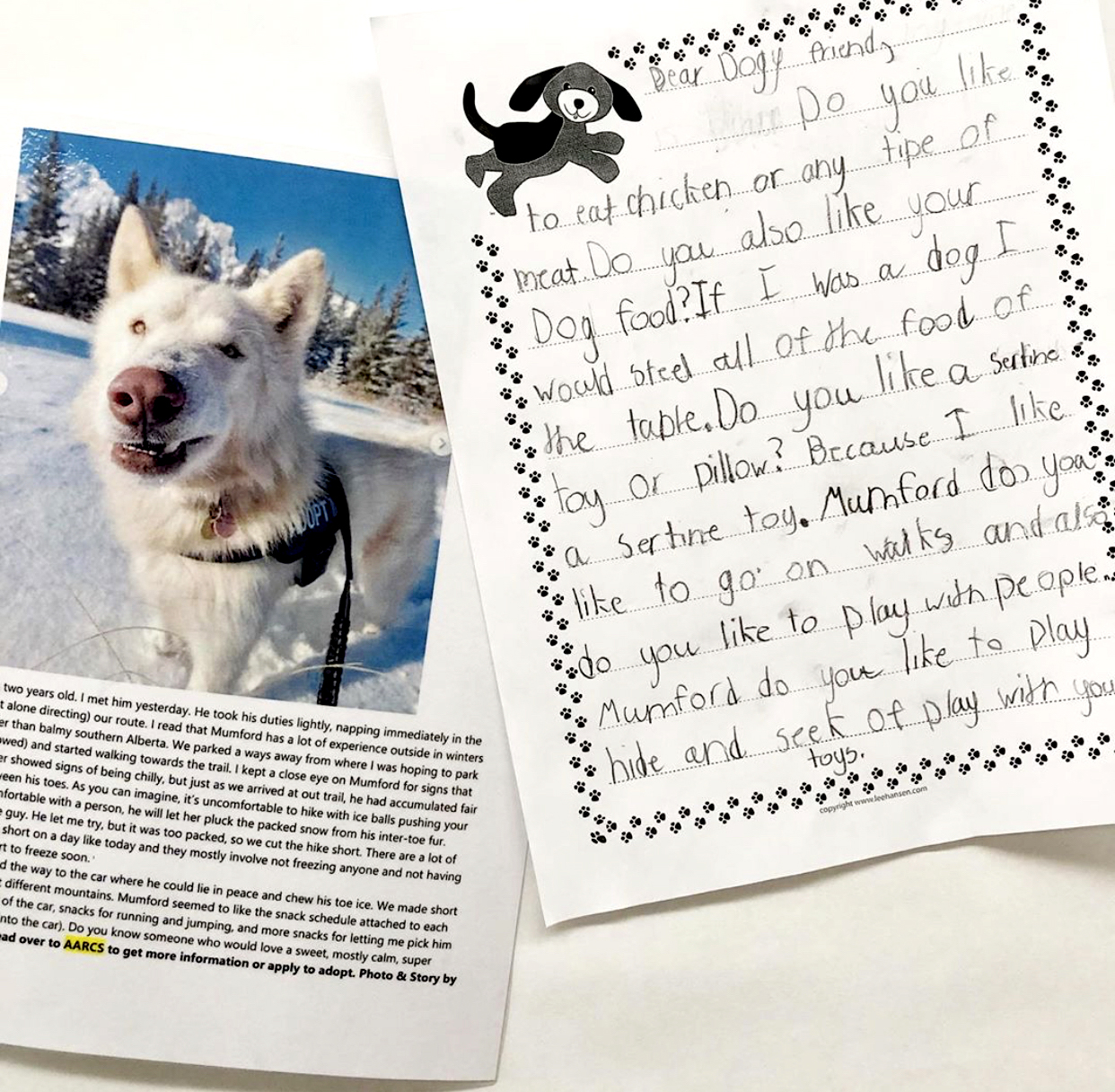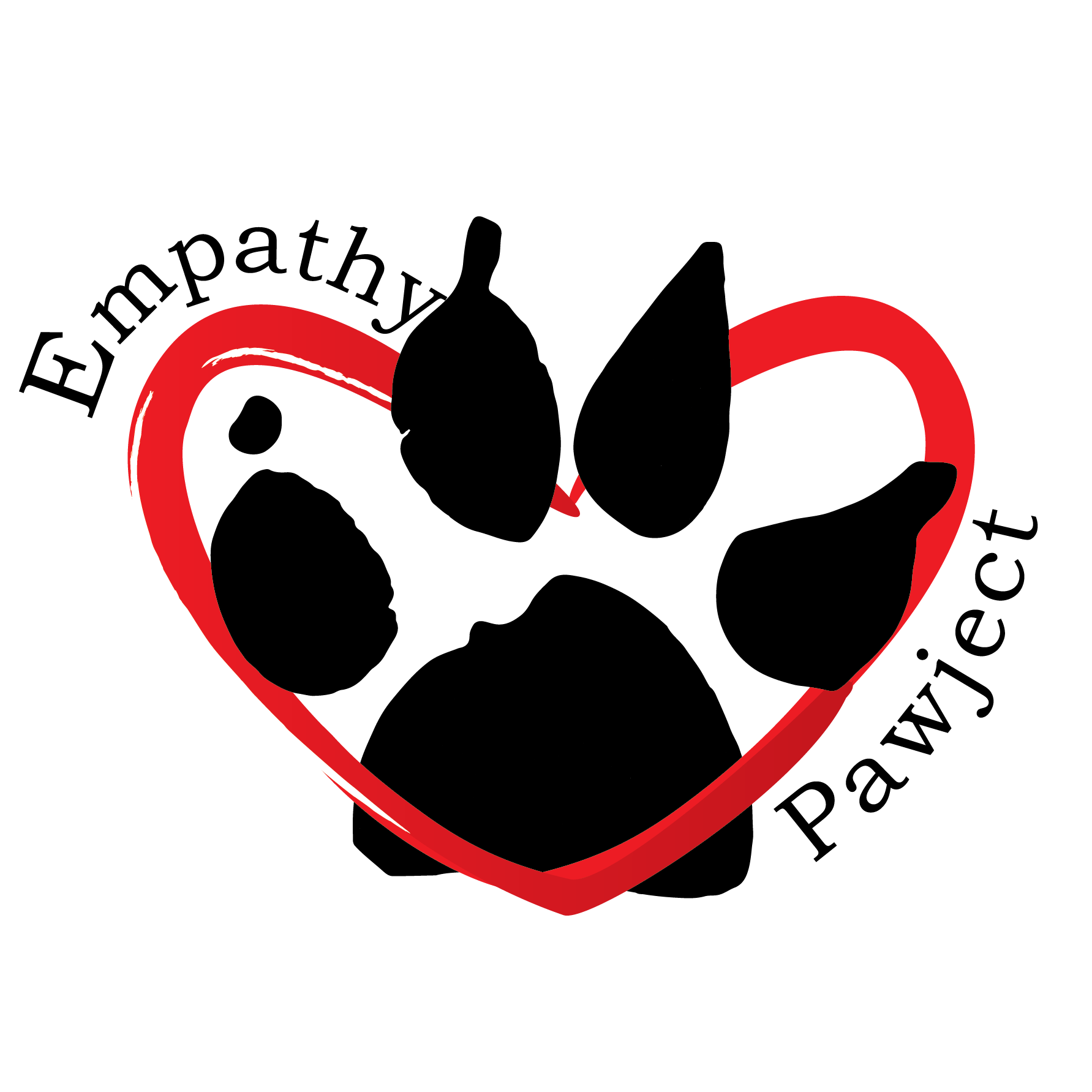What is the Empathy Pawject?
To feel empathy for another human or animal, is the starting point of acceptance and love. While studying in my undergrad, I spent time volunteering with children in the pediatric ward at the Moncton Hospital in New Brunswick. I learned there that although I knew what empathy was, you had to experience putting yourself in someone’s place, even if you had never gone through the same situation, to fully understand empathy. Once I moved to Calgary I began volunteering at the Calgary Wildlife and Rehabilitation Center. I was basically a wildlife ambulance driver, picking up injured animals and taking them to a center where a vet and other volunteers would care for them. I have always had a love of animals and was taught at a young age to respect all living creatures, but this volunteer position helped me understand how to feel empathy for someone else even if they couldn’t communicate their feelings to me. This experience made me think of ways I could possibly create a service learning program where my students would use their knowledge of compassion and kindness to build a connection with and to help real animals.

In this project, students receive a profile of a real dog in a real shelter. They will learn about their dog and discover that, like humans, dogs are very unique with their own set of likes and dislikes, quirks and wonderfully individual personalities. They present information about and paint a portrait of their adoptable dog. They write letters to their dogs and raise awareness for them by allowing me to post their work to the Instagram page @empathy.pawject, where a geotag tying that dog to its corresponding shelter is used as well as a series of hashtags and account tags to help gain attention for the dog. Through a series of empathy based and art based lessons, students learn what empathy means, how it differs from its sister words compassion, sympathy and pity, and the importance of treating all living creatures with kindness.
This program aligns with values I seek to instill in my students, empathy and a deeper connection to people and animals no matter how they differ from ourselves. The hope is that this will carry with them throughout their lives as future leaders. I began looking into ‘art and empathy’ as a starting point. Through research I have discovered great and intimate ties between art and empathy. I have attached those articles and books into the resource section of this website in hopes that other art educators are inspired to research and ultimately do this work.
My Goals

I developed three goals for my project:
- My first goal was to use art as a way of inspiriting empathy within the children that I taught. It didn’t take me long to realize that this goal would be quickly met. I am a firm believer now that all children possess empathy and it is our job as educators to gently guide this knowledge to the surface.
- My second goal was to combine art and humane education as a way to promote kindness to animals as well as raise awareness for shelter animals who so need and deserve loving homes.
- My third goal was to give children a public platform to show their art. I read an article written by a wonderful artist and professor named Dr. Harold Pearse. The late Dr. Harold Pearse had a deep and impacting influence on my work. I had Dr. Pearse for a class at the Nova Scotia College of Art and Design. In his article Dr. Pearse talked about the importance of celebrating children’s art by displaying it publically. Reading this encouraged me to reach out to him and after a great conversation about art education and children’s art, I was determined to make this a part of my project. I will be forever thankful for the help and encouragement of Dr. Harold Pearse.
Building Community
One goal I didn’t have on my list but became a huge and important gift that this project provided was to build community. From the beginning Rachael Rodgers, a Canmore based photographer and well known animal advocate, has been a fantastic supporter and great help to this project. Rachael takes adoptable dogs on adventures and posts the beautiful images and stories to help raise awareness and promote adoption through shelters. I reached out to Rachael and she generously offered for me to use all of her photographs!
Next, I reached out to local animal shelters and soon after that another artist named Sophie Gamand who uses her talents to raise awareness for the mislabeled and demonized dog breeds through works such as Pit Bull Flower Power. Gamand agreed to answer a series of questions I had which helped me with my own research. Both Rodgers and Gamand’s books are also listed in the resource section of this website. It did not take long before these connections blossomed and webbed into new connections and before I knew it I had found a community of like-minded individuals who were passionate about animal advocacy, education and art!
Lesson Plans
The Empathy Pawject is broken down into 9 lesson plans.
- What is Empathy
Adoptable Dog Profiles and Preliminary Sketches
Generic Dog Head Lesson
Underpainting
Blocking Values
What Makes a Happy Dog
Painting a New Future for Your Adoptable Dog
Painting Details
Dear Dog
The lessons cover both artistic techniques and the concept of empathy, as well as some thoughts about the various personalities and needs of dogs as adoptable animals.
You can access all my lesson plans below.











